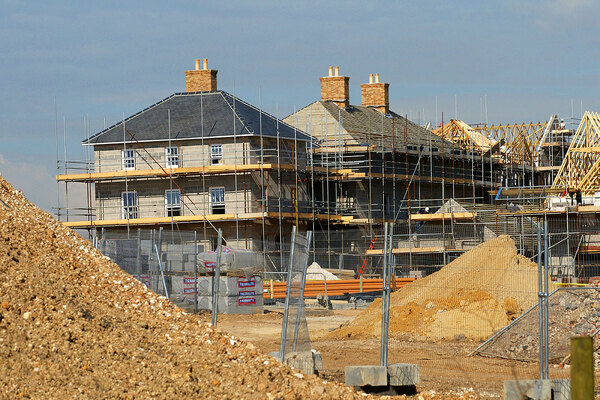London city living
We should be delivering housing suitable for the needs of London’s ‘city makers’, says Pocket’s Marc Vlessing


Marc Vlessing
To any outside observer, London’s appetite for housing appears virtually insatiable. In the coming years we know the city will need to build at least 50,000 homes annually to meet the projected demand. The new mayor, Sadiq Khan, has made a bold pledge to do everything possible to develop these homes and to ensure they are affordable for people who live and work in the city. His invitation to developers, local authorities and housing associations to come together and work with him to get London building is an important sign of his intent and an acknowledgement that there is no silver bullet to solve London’s housing crisis. We need many different solutions.
However, as the mayor fires the starting gun on boosting London’s housing supply, one particular group that should be at the forefront of his mind are young working singles and couples. Many of them are currently salaried out of social housing, but priced out of the open market. At Pocket we call this group ‘city makers’. They are the ones who make our city tick and keep the economy growing. They are the teachers in our schools, the coders of the latest technology and those who staff our hospitals to ensure that local people have access to decent healthcare.
We have been designing and building these homes for city makers for more than a decade. Our schemes are based in some of London’s most desirable boroughs, including Camden, Hackney and Westminster. Pocket has been able to deliver developments in these areas by targeting smaller brownfield sites that are often ignored by larger developers and building strong and lasting partnerships with local authorities centred on our track record of delivering affordable housing.
Our one-bed flats are only sold to first-time buyers who have lived or worked in the borough of the development for at least one year. They are priced at a discount of at least 20% to the market rate and those purchasing a Pocket property have to earn a salary beneath the mayor’s affordable income cap.
In perpetuity
All these criteria are kept in place in perpetuity to guarantee that future generations of first-time buyers can get on to the housing ladder. We have a significant loan of £26.4m from the Greater London Authority to deliver part of our pipeline and recently secured a strategic investment from the largest developer of affordable housing in the US, Related Companies, which will enable us to deliver more than 4,000 homes for city makers by 2023.
At Pocket we passionately believe that civil society should maintain a substantial percentage of its housing for social rent at significant discounts.
In London the figure today stands at approximately 30% for this type of housing, but we also believe that once this level is maintained it is crucial that we start to address the lack of intermediate housing for city makers. Barely 2% of London’s housing stock is intermediate and that clearly is wholly insufficient given the concerns of leading employers and the increasing numbers of young people moving to the city.
This is not to say that the government is resting on its laurels and letting London’s housing crisis fester. It is taking decisive action to boost housing supply for first-time buyers, incentivise them to begin saving for a home if they are not already, and to make owning a home in London more possible. Communities secretary Greg Clark and housing minister Brandon Lewis deserve credit for shaping policies that will directly benefit city makers including the Help to Buy equity loan (worth 40% of the value of a home in London and 20% across the UK), the Help to Buy ISA and the Starter Homes initiative.
Meeting needs
However, while the financing and supply of homes are being retooled to meet the demands of city makers in London; developers, local authorities and housing associations need to bear in mind exactly what it is they need in a home. City dwellers’ housing needs are different from previous generations. Many of them have lived in shared housing for years and tend not to have masses of possessions - they’re more likely to have a Spotify or Netflix account than a bulky CD or DVD collection. They prefer to collect experiences rather than physical things. They want their home to be situated near to public transport, local amenities and most importantly entertainment. Consequently, the type of housing that best suits their needs is centrally located, well-designed, compact apartments that are sold or available for rent at an affordable price point.
All of our developments are designed with the needs of the city maker front and centre. Each one contains significant communal space for residents to entertain family and friends or enjoy good weather.
For instance, Marcon Place, our award-winning development in Hackney, has a large internal courtyard, and Fermoy Road in Westminster has a spacious roof terrace. We know that city makers are more likely to cycle or use public transport than own a car so we provide them with secure cycle storage rather than car parking places.
One option for delivering more homes for this demographic is to rely more on innovative modern methods of construction (MMC), such as modular housing. At Pocket we are doing this for all our estate regeneration projects currently. The advantage of employing modular methods to regenerate London’s inner city estates is that developments can be built at pace and consequently homes can be delivered more quickly for city makers while keeping disruption to local residents to manageable levels. Modular enables us to slot new developments on to disused garages in existing estates and while estimates vary, this type of infilling could see 10,000 more homes built in London over the next 10 years if used more widely.
Pocket’s idea started off as a homes for sale model, and we will always continue to create affordable housing for sale, but it is palpably clear that for some sections of London a rental model is the only truly affordable option for housing city makers. Sadiq Khan’s London Living rent model is one that we are taking very seriously as we believe Rent to Buy solutions are an important way forward for the London housing economy. The key will be to structure this programme in such a way that institutional finance might want to join in funding it.
Marc Vlessing, chief executive, Pocket
This opinion piece was written independently, but first appeared in a chapter sponsored by HWO Architects








